Complex Systems Winter School 2015-Faculty: Difference between revisions
From Santa Fe Institute Events Wiki
No edit summary |
No edit summary |
||
| Line 94: | Line 94: | ||
[[image:sfiphotojuni3.jpg|150px|{border}]] <br> | [[image:sfiphotojuni3.jpg|150px|{border}]] <br> | ||
'''[http://santafe.edu/about/people/profile/Juniper%20Lovato Juniper Lovato],''' | '''[http://santafe.edu/about/people/profile/Juniper%20Lovato Juniper Lovato],''' Director of Education, Santa Fe Institute<br> | ||
<br><br> | <br><br> | ||
Revision as of 21:32, 20 November 2015
Program Director
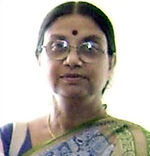
Somdatta Sinha, Program Director
Lecturers and Faculty

Tanmoy Bhattacharya, Theories and Treatment of Infectious Disease

Liz Bradley, Nonlinear Dynamics
This short course is a wide survey of the field of nonlinear dynamics.
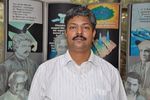
Anirban Chakraborti, Econophysics
Title : Econophysics I - Kinetic exchange models in complex socio-economic systems
Abstract: In this talk, I will review pedagogically the kinetic exchange models whose outcome is the prediction of the wealth distribution in the society. Comparison with empirical data, and the analytical fitting forms for such wealth distributions will be discussed. The micro-economic formulation of such models will be also mentioned, which establishes the link between the principles of maximum entropy in physics and utility maximization in economics. Then I will also briefly review a minimal multi-agent model for the collective dynamics of opinion formation (based on the similar kinetic exchange dynamics studied in the context of wealth distribution), and its simple variants and extensions that have been proposed recently by others.
Title: Econophysics II - Statistical mechanics of competitive resource allocation: El Farol Bar to Kolkata Paise Restaurant
Abstract: Demand outstrips available resources in most situations, which gives rise to competition, interaction and learning. In this talk, I will review a broad spectrum of multi-agent models of competition (El Farol Bar problem, Minority Game, Kolkata Paise Restaurant problem, and others) from the perspective of statistical physicists.

Arkadev Chattopadhyay , Computational Complexity

Aaron Clauset, Four Lectures on Network Science
Network science is a thriving cross-disciplinary domain focused on the representation, analysis and modeling of complex social, biological and technological systems as networks or graphs. These four lectures will provide a compact introduction to the modern study of network science. We will examine techniques for analyzing and modeling the structure and dynamics of complex networks, and we will cover a broad selection of the core concepts in the field. Some emphasis will be placed on statistical algorithms and methods, and on model interpretation and real data. Applications will be drawn from computational biology and computational social science.
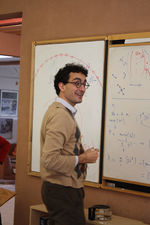
Simon DeDeo, Cognitive Science and Social Minds

Laurent Hebert-Dufresne, Statistical Physics and Complex Networks
We will discuss the increasingly central role of statistical physics in network theory. This will involve going over some standard tools of statistical physics applied to network problems --- for instance the description of growing social networks and the spread of infectious diseases --- and we will see how this different modelling philosophy often provides a unique perspective. In so doing, we will compare the statistical physics approach to the mathematical and computer science approaches to classical graph theory.

Eric Libby Microbial Ecology
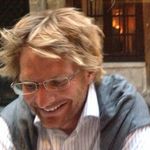
Ole Peters, Ergodicity Economics

Eleanor Power Social theory, social complexity, and social networks
What happens when our complex systems involve actors that are not cellular automatons or microbes, but conscious, reflective humans? when they have some awareness of what the outcomes of their actions might be, a sense of their position relative to others, and a representation of the larger social entities of which they are a part? In order to understand human social complexity, we need to understand something about how humans operate. To that end, we will first go over some of the fundamentals of social theory, looking at how various theorists have understood how individual action both shapes, and is shaped by, social structure. Having understood some of the critical dynamics of social interaction, in lecture two we will grapple with perhaps a more fundamental topic: the emergence of human social complexity. How can we explain the origins of sedentism? the domestication of plants and animals? the development of social and political institutions (marriage, kinship, religion, property rights)? the advent of state society? This will have us turn to the archaeological record to study some of the crucial transitions in human history. In the final lecture, we will discuss some of the contemporary approaches to these questions of social complexity. We will focus in particular on one of the most promising methodological tools being used today: social network analysis. Focusing on some examples of current scholarship, we will see how some of these fundamental questions of human sociality and complexity are shaped into meaningful, and feasible, research questions.
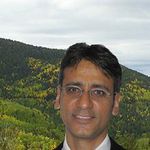
Rajiv Sethi, Agent-Based Computational Economics
These lectures will provide an introduction to agent-based computational modeling, drawing on applications in economics and finance. The first lecture will focus on the manner in which decentralized, uncoordinated choices can give rise to emergent properties such as residential segregation. The second and third lectures will examine financial markets, with a focus on how asset price dynamics depend on the composition of trading strategies, and how the composition of strategies itself evolves under pressure of differential profitability.
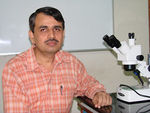
L S Shashidhara, Development of body plan
During development, relatively simple single-cellular embryo grows into a complex multicellular organism. The emergence of complexity is the result of a series of hierarchical events. I will discuss few simple rules that set developmental patterns during animal development. Built on these foundations, are the changes that have lead to the evolution of multiple forms.
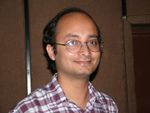
Sitabhra Sinha, Complexity in physiological systems
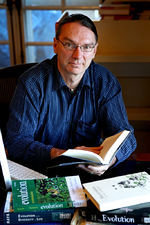
Andreas Wagner, Evolution and genotype networks
After a brief survey of important milestones in the history of evolutionary biology, these lectures will turn to the most fundamental problem of the field, namely how evolution creates new and beneficial features of organisms. This “innovation problem” has recently been tackled in different classes of complex molecular systems, including chemical reaction networks in metabolism, regulatory gene circuits, as well as protein and RNA macromolecules. I will discuss these efforts, the progress that has been made, and introduce the important role genotype networks play for innovation in all these systems. I will also touch upon other important tensions in modern evolutionary biology that relate to the innovation question, such as that between neutral and selected change, as well as that between a system’s robustness and its innovation ability. Time permitting, I will also discuss how recent insights into the innovation problem in biology could apply to technological evolution.
Staff
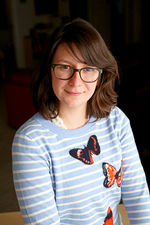
Juniper Lovato, Director of Education, Santa Fe Institute

